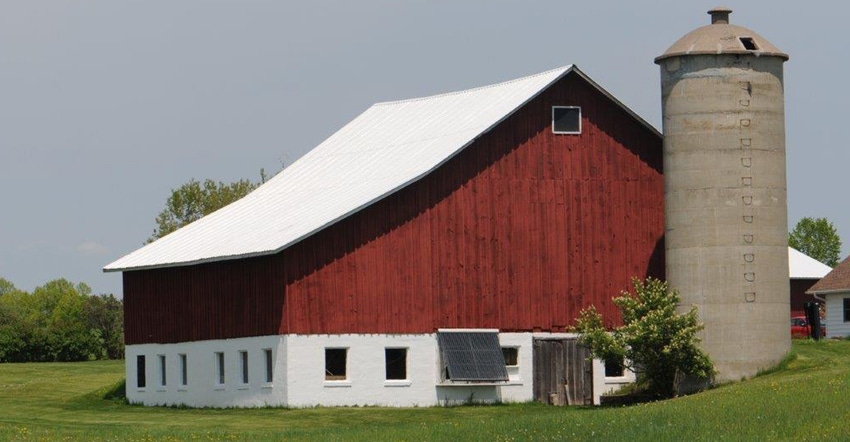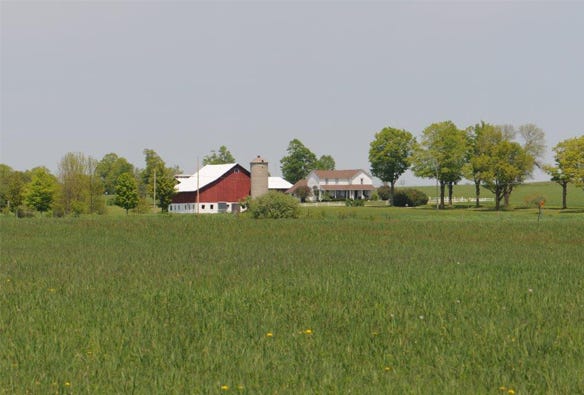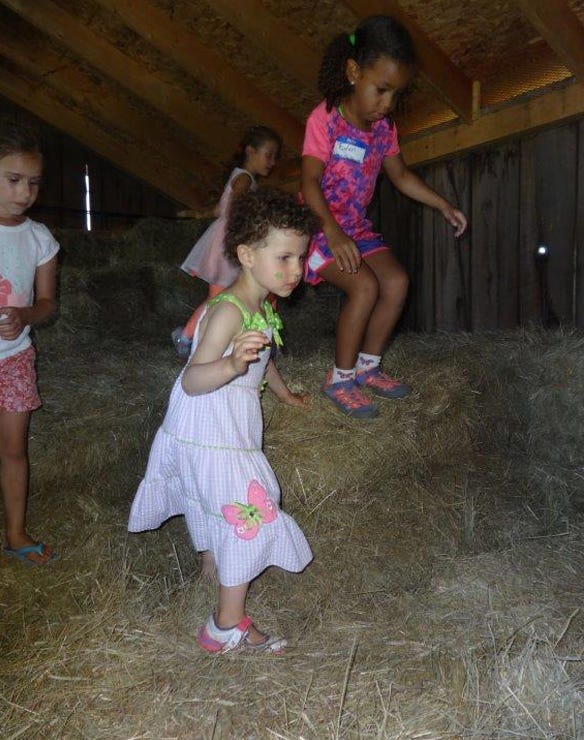July 1, 2019

Music to the ears of any barn lover are the words, “A barn has been saved.” When repairs to one barn influence work to give new life to another, beautiful music reverberates across the land.
When repairs began on an 1890s dairy barn in Delta County’s Gladstone, in the Upper Peninsula of Michigan, others took note. Impressed by the outcome, fellow barn owners have followed suit and have been inspired to invest in their barns.
“When we made the commitment to repair our barn, we found that neighbors also became more interested in theirs,” says Renee Richer, who with her father, Dale Richer, owns The Farmhouse Bed & Breakfast at 4568 County 416 20th Road.
A Michigan Centennial Farm, the house was built in 1888, and the barn was built a couple of years later. The house was used to board migrant workers before the farm was believed to have been bought by Joseph Richer in 1903, but so far, the family has been unable to confirm that date. Renee is Joseph’s great-granddaughter.
“We don’t know who the original owners were, but we have records for our own family going back to 1913,” Renee explains. “We can trace it to Azilda Richer Charbonneau, and it has now been in the family five generations.”
The Richers have undertaken several repairs since 2002 to give the barn a secure future, including two of the major needs — a sound roof and a solid foundation — and have done restoration work in the house to keep it as authentic as possible.

RURAL LIFE: Guests from metropolitan areas where buildings seem to touch the sky, traffic never slows and the night sky is awash in lights are in awe of open space and the quiet of a rural setting.

Another essential part of saving the barn was the repair of a major beam that had been damaged by water.
“The original barn beams are 55 feet long and 12 inches by 12 inches,” Renee explains. “Obviously, beams of that size are not readily available today. However, with a savvy carpenter we were able to replace the beam in three sections.”
Pointing out that the cost to repair this single beam was about $5,000, Renee emphasizes the importance of keeping water out of a timber-frame barn, adding, “The work is beautiful and will ensure the barn is around for another 120 years.”
The barn was used for dairy cattle from the 1930s to the 1960s, what many regard as the best years for the traditional family farm in Michigan. It was when farms illustrated the natural cycle of life and interdependent relationships that had to exist between the farm family and their livestock, crops, gardens, and the four seasons.
“We know that a milking parlor was added below the original structure by Wilfred Richer (Dale’s father) in the 1940s,” Renee explains. “Other than that, the barn remains original, with the exception of repairs to the beam and individual boards.” The milking parlor, even with stanchions intact, now serves as a workshop.
A portion of the mow still stores hay for sheep and horses with the remainder used for events.

FARM LIFE: A hen and her chicks enjoy freedom, knowing the safety of the barn is never far away.

Today, the giggles of children on field trips, greetings of family members reconnecting at reunions and whispered commitments of couples exchanging vows replace the sounds of cattle shifting in their stalls, lowing as the grain cart approaches.
“The barn has a large rope swing that has amused countless cousins and continues to intrigue children on school trips and adults reliving bygone days,” Renee says. “Senior citizens enjoy the barn swing and the scent of fresh hay and reminisce over their days as a child on a dairy farm.”
Barns have always been kid magnets as youthful energy is channeled by building hay forts and tunnels with square bales in the haymow.
“Our barn is a source of personal and local pride,” Renee says. “Neighborhood youngsters, now grown, are choosing to have their weddings here in the barn that is a part of their childhood memories.”
For others, memories are just being made and taken back to places such as Dubai, China, Germany and Greece. Amid 200 acres, the Farmhouse Bed & Breakfast is near the Hiawatha National Forest and Lake Michigan.

BARN FUN: For generations, farm kids have taken playing in the hay for granted. Today's children see it as an exciting new experience.

Fortunately, the Richers have not encountered challenges from local zoning or township officials, as has been the case in many parts of the state when farm owners have sought to adapt their farm buildings to new uses.
“I find it disappointing that with farmers being so desperate to remain on the land and support the country’s heritage and their own personal family heritage by offering alternative activities and now farming solar energy, that zoning and township officials are not more supportive,” Renee says.
“We are a new take on farming,” Renee says happily. “We have guests from around the world and use solar energy. We also use the farm to provide education, offering workshops on raising berries, preparing mid-Eastern cuisine, raising chickens and even understanding gastronomic botany.”
For the Richers, a Michigan Centennial Farm lives on under the care of the five-generation family that loves it.
Arnett is currently gathering information about the biggest, oldest and most unique barns across Michigan. Send information to her at [email protected]. She writes from Battle Creek, Mich.
About the Author(s)
You May Also Like




